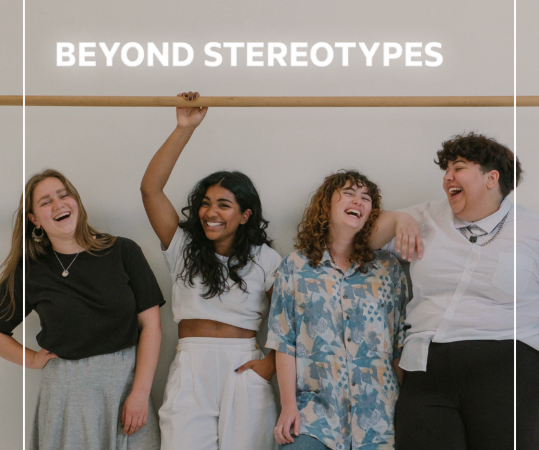Why do we need stereotypes? It’s worth looking into this phenomenon. On the one hand, with the amount of information and stimuli we have to absorb on a daily basis, the time-saving function of stereotypes can be very useful. On the other hand, however, this cognitive stinginess has enormous consequences, which you can observe not only in your immediate surroundings, but also when following media reports from all over the world. Read about where they come from and how they affect our lives in the attached interview with dr. Sylwia Bedyńska entitled “At First Sight”.
Stereotypes are applied by us to others, but we can also be perceived stereotypically. Most of us can effortlessly recall a time when someone judged us and said that we look or behave differently than we should, being, for example, a woman, a man, or a mother – simply because we belong to a particular social group. Many of us may have felt anger or a desire to rebel against imposing something on us that is not entirely compatible with who we are. Sometimes we don’t know exactly what it is that’s bothering us. After all, each of us needs a sense of belonging to a group with which they share some qualities. At the same time, membership means assigning us a social scenario that we “should” pursue.
Going beyond this imaginary role exposes us to discomfort, judgement, and even rejection. This applies both to us, adults, and children who, on the basis of messages from the environment, quickly build an idea of the scenarios into which they should fit. So how do we broaden the description of these roles so as not to lose belonging, but also not to give up on our individual needs? It’s worth looking at how such beliefs have formed in our heads and why language plays a huge role in this. It’s the messages – praise, judgements, comments – that, together with our specific behaviours, co-create the children’s ideas about who they are and who they “should” be. So how should we talk to them so as not to limit them with stereotypes? Take a look at our posters with suggestions of good words that will help dispel gender stereotypes.
We also encourage you to look at your own beliefs regarding the extent to which our skills are defined by gender – and whether they are at all. Dr. Maria M. Pawłowska talks about how this happens and how it affects our lives. Perhaps you will discover that your choices have also repeatedly resulted from beliefs about what you can and cannot do depending on gender. We want a good future for all of us, so let us not be constrained by stereotypes.


